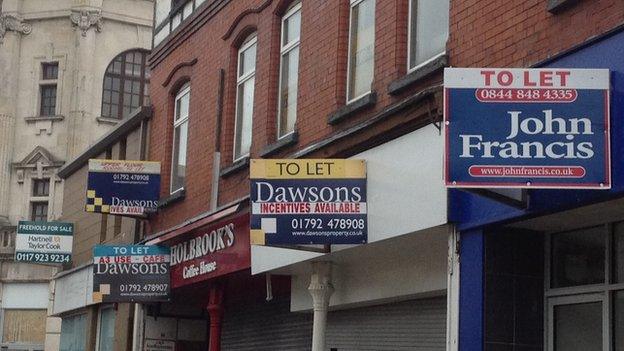Swansea still regenerating 75 years after Blitz
- Published
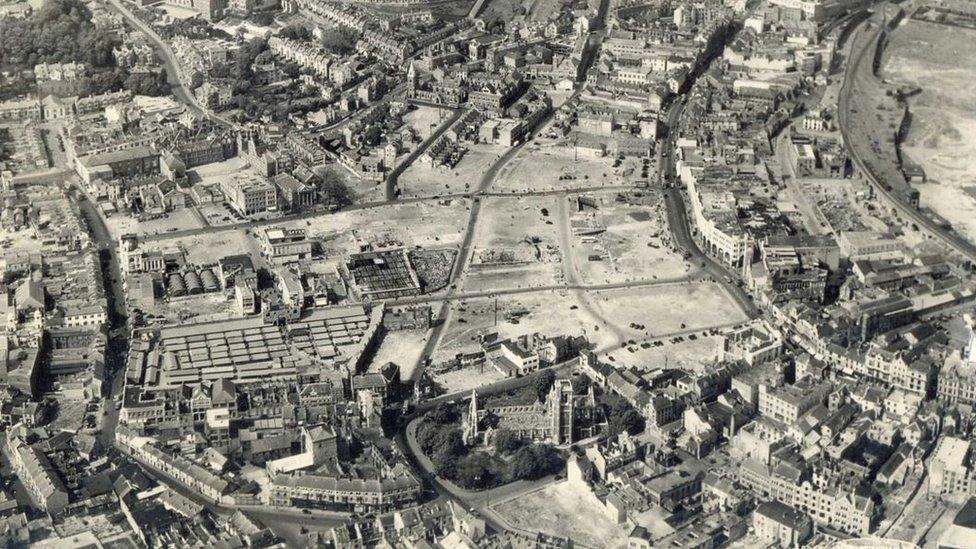
Seventy-five years after German bombs rained on a thriving Swansea for three successive nights during World War Two, efforts are still being made to regenerate its centre.
The city was reduced to rubble during what became known as the "Swansea Blitz".
About 35,000 incendiaries and 800 high explosive bombs were dropped during the raids which started on 19 February, 1941, killing 230 people.
The raging fires could be seen from the other side of the Bristol Channel in Devon.
Swansea was targeted because of its nearby docks and part of the Germans' bombing campaign was to cripple exports as well as demoralise civilians and emergency services.
It resulted in whole areas being completely cleared and rebuilding starting from scratch.
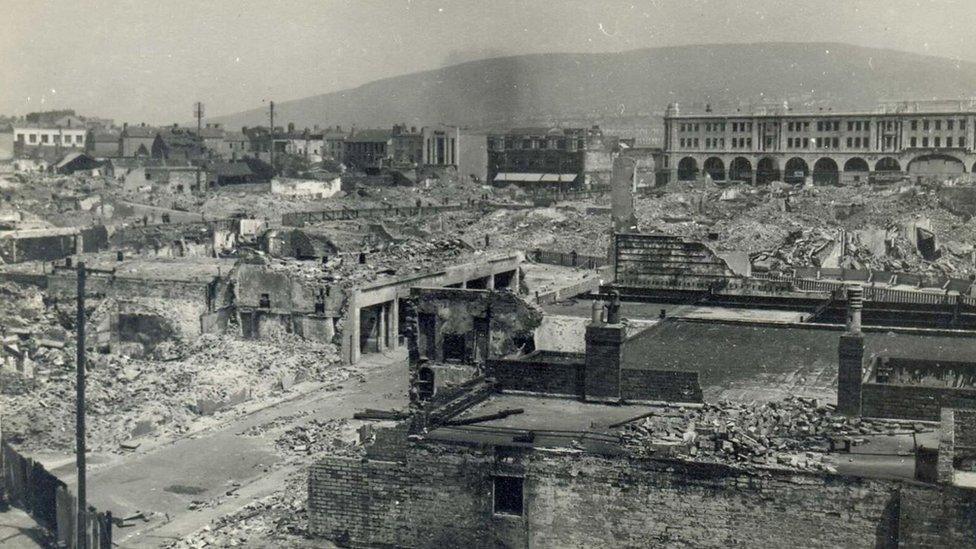
Many of the buildings were reduced to rubble over the course of three nights
"Pre-Second World War Swansea had begun to look and feel like a city," said Bangor University's Dr Dinah Evans, whose research includes the impact of warfare on, and reconstruction of, Swansea.
"Hotels, restaurants and cafes abounded, together with theatres, art galleries, concert halls and shopping arcades.

Three Night Blitz
Wednesday 19 February - Friday 21 February, 1941
Up to 70 German Luftwaffe aircraft were involved in the attack over three nights
About 35,000 incendiaries were dropped and 800 high explosive bombs
230 people were killed and more than 400 injured
More than 11,000 buildings and homes were destroyed or damaged
Some of Swansea's oldest buildings - Swansea castle, Swansea museum and the Glynn Vivian Art Gallery survived
However, its commercial heart was destroyed with the iconic market and Ben Evans store flattened

"In the commercial centres of Wind Street, Castle Street and High Street the pavements were wide and the shops fronting onto them stylish, selling merchandise of all kinds.
"The department stores were imposing and many of a calibre usually found in London.
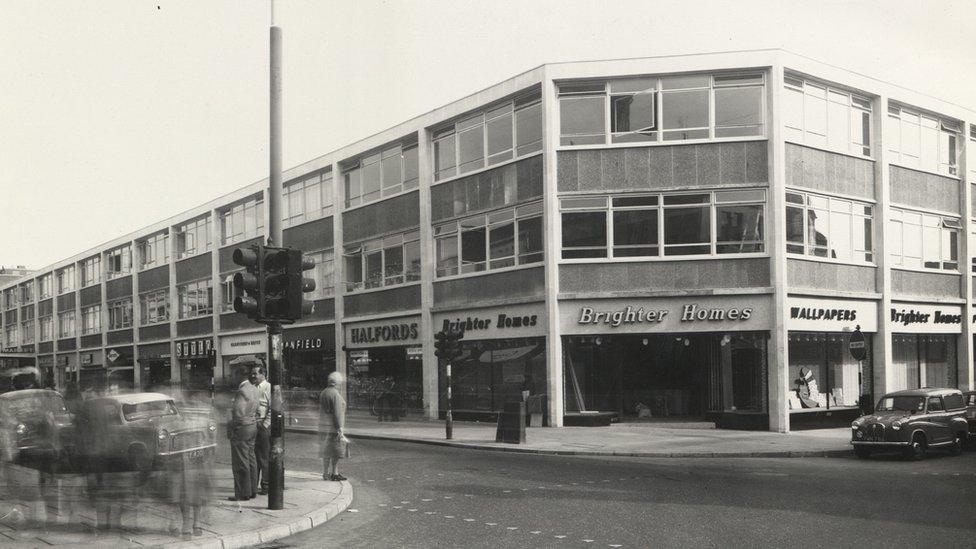
Oxford Street was one of the areas needing to be rebuilt after the war
"However, when in 1941 Swansea came under enemy attack from the air, the face of the town was changed for ever.
"Although the town's Guildhall, art gallery and library were still standing when the bombing stopped, its social and entertainment heart had all but disappeared.
"The town centre was destroyed and Swansea people had to contend with a bleak landscape where once prosperous shops and stores had stood."
Dr Evans said the council was under pressure to produce a plan that would not only restore those areas damaged in the blitz but also ensure the future prosperity of Swansea.
She added: "Meanwhile rumours began to circulate in the press that Swansea town's reconstruction progress compared unfavourably with other bombed cities, especially that of Plymouth.
"However, when it came to the question of rebuilding a blitzed town or city centre, there were limits to what could be achieved.
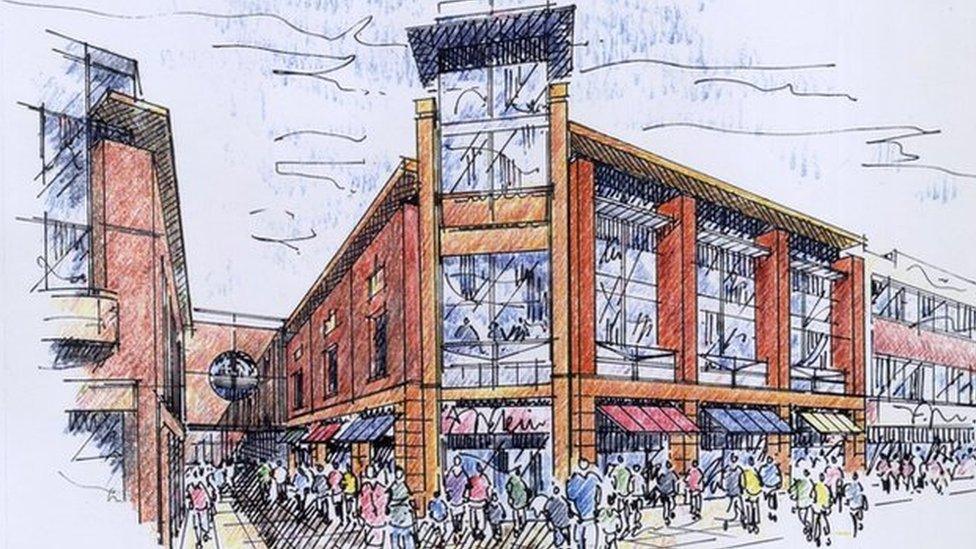
Castle Quays would have put a third of the city centre under cover but be closed off at night
"The war effort had all but bankrupted Britain and the financial stringencies of post-war Britain would conflict with the visions of many local authorities for the reconstruction process.
"Swansea was no exception; the plans of its town council for a new shopping and commercial centre were subject to endless delays, shortages and restrictions.
"The rebuilt town centre, some 20 years later, was a product of its time - functional but with little style, the outcome of inadequate funding."
Since then, plans have come and gone to regenerate the city centre on a huge scale, including the doomed Castle Quays project which was first mooted in 1994 and scrapped 10 years later.
Respective ruling councils have struggled to find an alternative option, with the most recent failure the collapse of a £1bn transformation project.
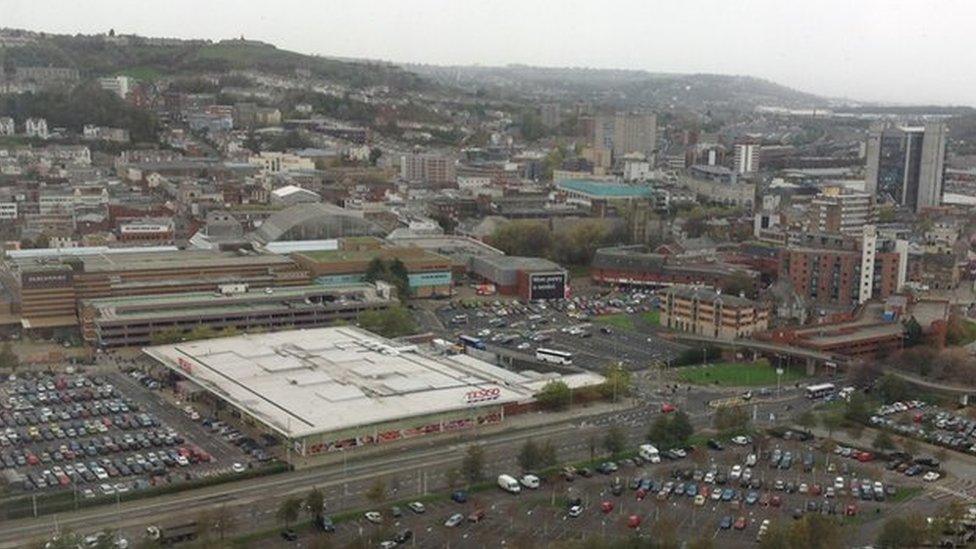
All aspects of the city centre are being looked at under current proposals
"There's been no real major investment in Swansea," said Chris Holley, who led the city's council from 2004 until 2012.
"Most development companies look at the city and say there's not enough wealth to invest in the city centre.
"After the war there was investment but we had more factories and more jobs and they've all gone now."

Regenerating Swansea
1941: Swansea's centre was destroyed after three successive nights of bombings as it was targeted for its nearby docks
1941: The market and department store Ben Evans were among the wreckage
1969: Swansea became a city
1977: Leisure centre was built and two years later the Quadrant shopping centre opened.
1982: Swansea marina and neighbouring county hall opened
1989: Parc Tawe, which was built in the late 1980s to replace the industrial wasteland that had once been Swansea's thriving North Dock
1994: Castle Quays development to regenerate the city centre was unveiled, the biggest since the war
2004: After many false starts, the £125m Castle Quays project was scrapped
2005: Claims the city centre was becoming a ghost town
2007: Post-war building housing former David Evans department store is demolished two years after the retailer pulled out of the city. The replacement building was seen as key to kick-starting regeneration
2008: Developer Hammerson appointed to lead £1bn regeneration on the city centre
2013: Hammerson pulls out after little progress
2014: International experts were called in to help regenerate the city centre
2015: Plans announced for new regeneration scheme of the city centre
2016: Developers for £500m regeneration chosen with work due to start in 2017

"Now it's the case of not having the disposable wealth which would generate sales across the patch and we haven't got a huge travel to work area."
Mr Holley pointed out the amount of investment Cardiff has received over the years and the Welsh capital is thriving both in the city centre and Cardiff Bay.
Swansea has failed to significantly move forward but planners hope the latest plans, unveiled in January, will finally give the city centre the regeneration it needs.
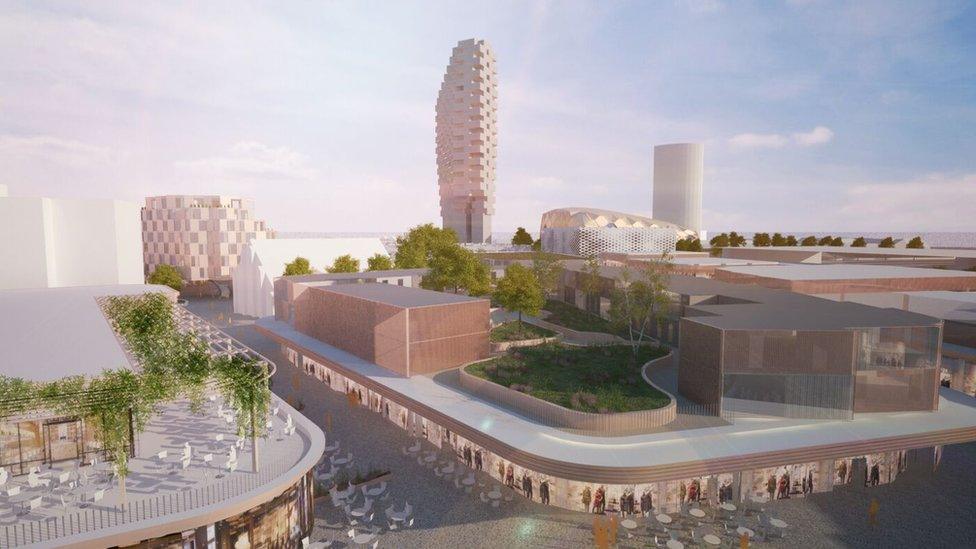
£500m plans were unveiled by Swansea council in January 2016
The £500m project will be the biggest landscape change since the blitz and work is due to start in 2017.
It will include a 3,500-seat arena, an aquarium and a new shopping area along with the creation of a city beach area with bars, restaurants, offices, 5-star hotels and homes which will open on to an extended promenade and the beach.
"I think St David's [shopping area and cafe quarter] would be great for the city centre," said Mr Holley, who is leader of the council's opposition.
"If we can build the arena, it will help the city centre with footfall.
"I'm not too sure about the civic centre development as that appears to be mostly flats."
Only time will tell.
- Published22 January 2016
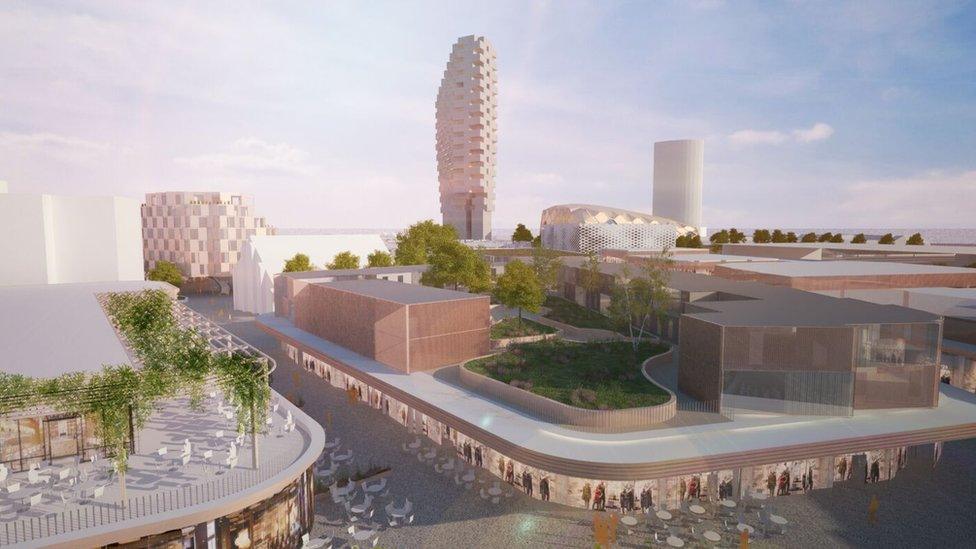
- Published29 December 2014
